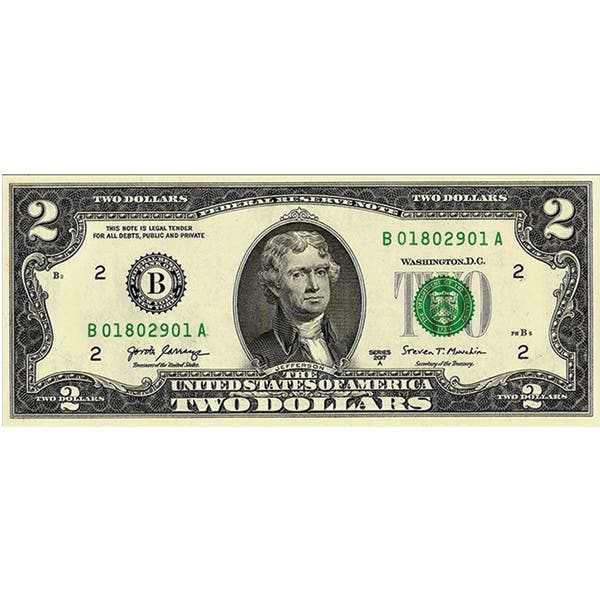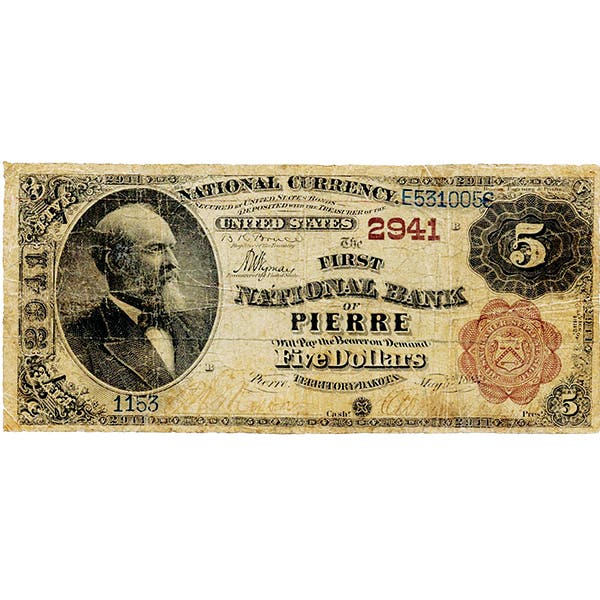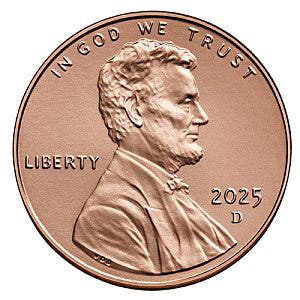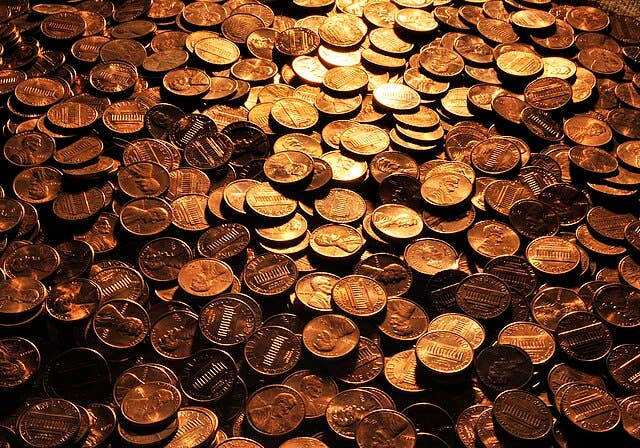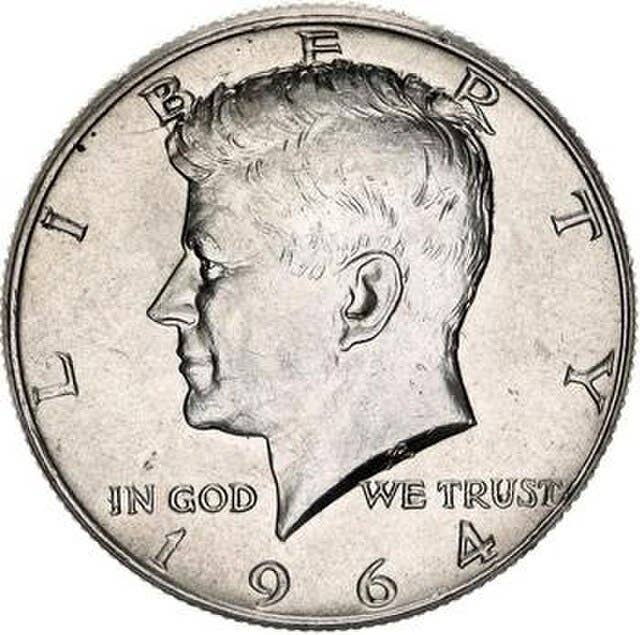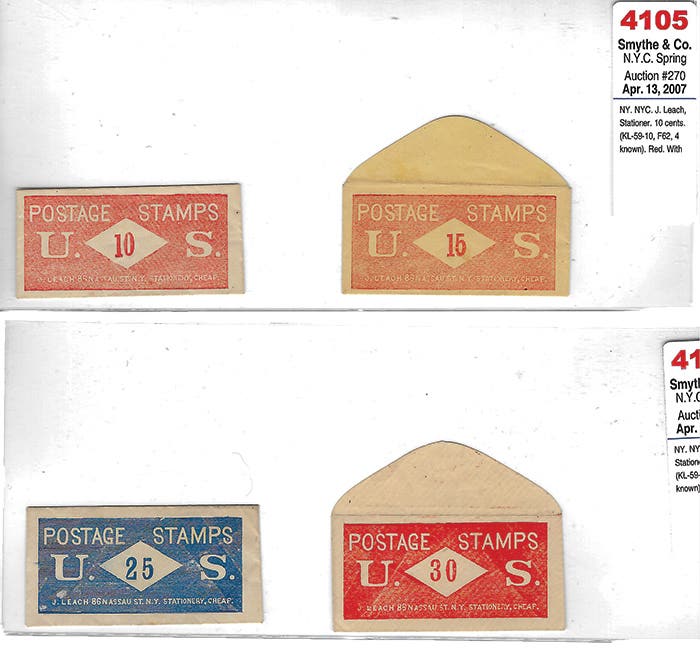This Week’s Letters (12/17/09)
This weeks letters from readers of Numismatic News to editor, Dave Harper.
Govt. should forget about 1933 $20 gold
I am disgusted about always reading about the 1933 $20 gold pieces and how the government wishes to confiscate them because it feels that they may have been stolen property.
Maybe it was, maybe it wasn’t. It cannot be proven one way or the other, so why make a big deal out of something that happened almost 80 years ago and spend money on trials and so forth? Why not do a magnanimous gesture to the numismatic community and forgive and forget? They are acting like bratty kids in the first grade complaining that someone stole their candy, and they would never hear the end of it because their ego has been hurt.
The numismatic community has been wonderful to our government. It buys their merchandise. We get slapped in the face as it seems they refuse to redesign our coins and keep 100-year-old designs and so forth. Maybe clad commemorative half dollars. They sell for the price of silver. And maybe commemorative coins to always sell to collectors when they should be made for circulation while they always crank out the same boring, tired and worn-out designs for circulation.
I believe the collectors are being duped and bamboozled and need to stand up. For example, why does the platinum bullion reverse get redesigned but never the silver? Why no commemorative paper money?
Back to the 1933 $20 gold, the government doesn’t have a leg to stand on since there are precedents that the government ignored, such as 1868 large cents, 1884 and 1885 trade dollars and 1913 Liberty nickels. These are no different from the 1933 $20 gold, but nothing has ever been said of such.
The government even had the audacity to display the confiscated gold coins at a coin show! Isn’t this enough to tell you something is up?
My solution to the problem would be to make everyone happy and reissue the 1933 gold coins as restrikes so that everyone could have one and the few supposedly stole 1933 coins would be worth only as much as a common $20 gold. This is not a far-fetched idea. The government did it in 1965 and 1966 with 1964-dated coins and in 1975 with 1974 coins. With this solution, everyone would be a winner and I would love the government for it. If the government wants to use 100-year-old designs for circulation, they can do this, too.
Bob Olekson
Parma, Ohio
American entrepreneurs deserve coin honors
There is a long list of inventors and businessmen that prospered under the American system of free enterprise. These men gave us the highest standard of living the world has known. These dedicated individuals brought progress and wealth to this nation and highly qualify for their Yankee ingenuity to be honored on our coinage:
Alexander G. Bell, telephone; William S. Burroughs, adding machine; George Eastman, flexible roll film, Kodak camera; Thomas A. Edison, movie projector, incandescent lamp; Benjamin Franklin, bifocals; Robert Fulton, steamboat; Richard H. Goddard, Holland, submarine; Elias Howe, sewing machine; Samuel B. Morse, telegraph; Elisha G. Otis, elevator; Christopher L. Sholes, typewriter; Henry Ford, auto mass production; Igor Sikorsky, helicopter; James Ritty, cash register; John Gorrie, refrigeration; William E. Boeing, one of the founders of the Boeing Company; Richard M. Hoe, rotary printing press; Henry J. Kaiser, auto and ship builder; L.E. Waterman, fountain pen; Wright brothers, airplane; Andrew Carnegie, industrialist.
We need diverse coin designs for millions of coin collectors.
Zdenek Vesely
Portland, Ore.
Why are 2009 nickels, dimes so hard to find?
I have read your magazine cover to cover all year and have not seen a single article on why it is impossible to acquire 2009 nickels and dimes from any source other than mint sets or big catalog dealers who are selling them at 400 percent profit or $2.95 plus $7 shipping per nickel or dime.
I have talked to people at the Mint and was told circulation-quality coins were being shipped in limited quantities ... they would not say to whom, but I’ll bet it’s only to the big catalog sales companies.
Cas Satkowski
Wintersville, Ohio
Take time to sell off coins in retail manner
I am tired of reading letters and articles in NN telling readers they should expect to lose money collecting coins. They all say, “Enjoy the hobby, but expect to lose.” I say that’s baloney!
The problem these authors all have in common is each suddenly decided to dispose of their collections and then liquidated quickly through consignment auctions and dealers. They should have sold out the same way they acquired the collection – slowly.
If it took you 10 years to collect your coins, then expect to spend 10 years selling them. If I ever sell my coins (not likely) I will display them at numerous coin shows each year as well as advertise them in publications such as NN. This way I sell them at retail prices to the public just like the dealers. Remember, dealers can keep many coins in stock a long time before they sell. Unless you are pinched for money, can’t you do the same?
Another problem sellers have is they allow dealers to knock down their coins for things such as cleaning and minor defects. A dealer can tell you your coin is not worth much because of cleaning.
There are a lot of collectors who like cleaned coins, especially if they look natural. I have a complete set of Trade dollars including all the proof issues. At least one of them may have been cleaned, that being my uncirculated 1877-CC.
This coin is beautiful and rare and looks a lot more desirable than many heavily toned trade dollars that look more like pizzas than coins. I can sell this coin for a nice profit simply because it is one of the best.
As to minor defects, most have a minor impact on retail value, especially on old coins. So don’t let the dealer fraternity steal your collection from you. That’s how the major ones got rich. Be a retailer when you sell.
Finally, if you want to sell after retirement, you’ll have plenty of time to go to shows and sell profitably on a slow basis. It can be something truly enjoyable in your retirement years.
Richard L. Bowers
Cicero, Ind.
Schlag’s initials don’t belong on 2008 nickels
The 2008-dated nickels mistakenly include designer Felix Schlag’s initials to the right of Monticello on the reverse. It is interesting the U.S. Mint did not consult its archives before doing this.
Because in 1938, the first year of Schlag’s design, the U.S. Mint rejected his design for the reverse of the coin. The design chosen, a somewhat “streamlined” version, is the design we see today. Mr. Schlag’s original reverse depicted an almost baroque, cornered view of Monticello. If this design could be used for the coin, it would be appropriate to include Mr. Schlag’s initials.
Edward Vogel
New York, N.Y.
‘Walk a mile’ before judging dealer’s actions
There is an old adage that states that one should never judge a man until he has walked a mile in his shoes. Michael Sanders (“Dealer who doesn’t like public all wrong”) has the audacity to judge me without taking a single step in my shoes.
Maybe he never had any experiences with people monopolizing his time with a hoard of junk that they think will make them a small fortune. Perhaps no one ever waltzed up to his table demanding “ask” prices for their little treasures. Evidently no one asked him if he would pay double face for spendable pocket change or top dollar for coins that look like they had been scoured with kitchen cleanser and a wire brush.
Mr. Sanders then tries to accuse me of doing my best to add to people’s negative perception of coin dealers. Many of my regular customers compliment me regularly about how fairly I deal with them and how interesting my material is. That is why I give my full attention to my steady patrons and short shrift to some of these characters, who, with greed oozing from every pore, come hoping that I do something foolish and give them more than I would be able to get for their coins. Most of the time I, politely, Mr. Sanders, tell them up front that I do not buy from the public. Only when they won’t take no for an answer do I show my gruffer side.
Mr. Sanders needs to come down from his ivory tower and realize that a person can only tolerate so much nonsense.
William Bejda
Cicero, Ill.
Security important for retail, show dealers alike
Having just finished reading Debbie Bradley’s article on security at coin shows in the Nov. 10 issue of Numismatic News. I thought I’d throw in a few words of experience.
Twenty-something years ago I was a sporadic advertiser in the Sports Collectors Digest, doing mail-order baseball cards. This ultimately led to my being involved as a partner in a retail location that was burglarized one year shortly before Christmas. We had the old system of magnetic tape on the perimeter doors and windows. The thieves came in through the HVAC system on the roof.
Two weeks later once of the geniuses came into the store to sell us back our own cards, in our own sleeves with the price tags still on the material! The band had also burglarized another card store and had some of their material as well. When my partner’s son realized what was going on, he alerted me.
Being December and chilly in the store, I rubbed my hands together and asked the perp if he would like a cup of coffee from the 7-11 around the corner, as I was going for some hot chocolate. He declined. I calmly walked out to the 7-11 and placed a call to the police, who showed up and arrested the clown. Convicted. Imprisoned. Justice!
Fast forward to today. As a small, part -time coin dealer who does shows, and sometimes advertises in hobby publications, I can never tell what will show up in my mailbox. This past summer a letter arrived from an unfamiliar name. This gentleman has an 1878 Barber metric goloid dollar, and would I be interested?
As luck would have it, one of the hobby publications had an article on fake goloid dollars that same week. I tore the article out and sent it to the gentleman, expecting not to hear from him again. A week or two went by when another letter arrived from the same party. He knew the coin was genuine, probably MS-65, as he carried it in his pocket for a few days. I replied again, informing him that the only way his coin would sell would be if the coin was authenticated by a third party grading service.
To make a long story short, his girlfriend sends the coin to me. The coin snapped to a magnet. Under magnification little peaks of red were present. I returned the coin to the lady with my opinion. Another letter from the guy arrives letting me know that the coin was real. The rust on the coin was metal transferred during the strike with rusty dies, and a combination of the ocean air where he was currently residing in the pen for 22 years for robbing a coin dealer! I did a show close to his current residence. I took his folder with me, thinking that if the chance arose I would stop by his Warden’s office for a visit. I didn’t have the chance.
Another fine example occurred not so long ago at a show I was attending. I had just about finished setting up my display cases when I noticed another dealer frantically searching through boxes. He started to close up his table, and I said that the public was coming in 15 minutes and asked what he was doing. He “lost” some gold and he was in a panic. Ten minutes later he’s back, followed by an “early bird” and the chief of security. The exchange went something like this: I’m missing some gold, you were the only one here. Do you want me to open my case? Yes. Ah, it was a fine display! The early bird, being totally innocent, really let the dealer have it. Some mistakes you don’t want to make. The coins were later found on the dealer’s kitchen table. Ouch!
Another dealer at another show was arrested after he was observed putting other dealers’ coins in his pocket. I never really did like the guy. He would sit at a show cleaning his coins! I had let him take boxes of my inventory to look through. I saw him pocketing coins but it never occurred to me he was stealing them. I thought he’d take the coins out and pay for them when he was done looking through them.
Returning from another show, I said to my partner that I didn’t see a particular box containing proof sets when we were packing up. He said that he didn’t recall seeing the box either. I said that it was possible that the box never made it into the truck in the first place to go to the show. Still don’t know what happened to it.
So, what does all this mean? Nothing. Only that stuff happens, and that we indeed should be aware of our surroundings as Doug Davis said. There are a great deal of things we can do to increase our security in whatever situation we put ourselves in. Whether you have a retail establishment or just do shows, a security audit may very well be worth your while.
Name and address withheld
Any other reports of Lincoln dollar error?
I am writing you concerning a Lincoln Commemorative Dollar Proof Set that I purchased from the U.S. Mint.
I have discovered a mint error on the Lincoln dollar. There is a distinct raised area located on the left side of his lower lip. It is a thin raised area from the top of the lower lip to the bottom, and it appears to be another small mole.
I am curious, have you received any information from other coin collectors with a similar type error, or am I the only one who has this error and reported it?
I have five of the Lincoln dollars and only one has this error. None of the other I own have any similar defects.
I know you have a lot of readers of your printed material, so I thought I would write to find out if anyone out there has a similar defect.
Gilbert Beck
Madison, Wis.
Mint state Eagles can go into IRAs, too
This is my first time ever responding to one of your questions
First, I was never aware that we could force the government to do anything, but the more important issue is that by not producing any proof gold Eagles this year, it has put pressure on an already strained market of proof gold Eagles being sold into IRA’s.
Wholesale pricing has now exceeded $2,000 an ounce because of the government’s failure to produce a supply of 2009 coins and to exclude proof Eagles from IRA’s like they did the proof gold Buffalo’s in the very beginning. Prices have gone past the $3,200 they are being sold for.
I continue to try and educate as many people as possible about the ability to put mint state Eagles into their IRAs and that they would benefit by almost an additional 2 ounces of gold. I am not telling people that proof gold Eagles are a bad investment. That would be negative appeal. I simply point out that if they can buy more gold for their IRA with the mint state that I would think that they would more interested in owning more gold for the same money spent.
I don’t have millions of dollars to try and promote this like the companies who sell this concept do and I am not making too many friends by bringing this subject up, BUT think about what this is doing to our nation’s retirement future. Currently there is $4.4 trillion in IRAs, only the coin market can turn that into $1.5 trillion. There are companies opening up all over the country to just sell proof gold to IRA interests, similar to what happened when the mortgage companies opened up all over. You know how that turned out.
Robert L. Higgins
President-CEO
Certified Assets Management, Inc.
Wilmington, Del.
Who bought all the Anna Harrison medals?
I enjoyed your column about medals and specifically First Spouse medals. I do collect First Spouse medals as well as First Spouse coins. I initially had the idea of collecting all the First Spouse coins, but as the price of gold has risen, that has become too expensive. Now, I only buy the coins I especially like and plan to buy the medals to fill out my collection.
However, I have a problem: Until recently, all the medals from 2008 and 2009 were available except for Anna Harrison. The Anna Harrison medal was sold out. Is there a big Anna Harrison fan club no one knows about? It is true that she has the distinction of being the First Spouse who gave birth to the largest number of children (10). Maybe she has a lot of descendants who quickly bought the entire run of her medals. Or maybe the U.S. Mint underestimated the demand.
I hope that Numismatic News will assign a team of crack investigative reporters to answer this question: Who bought all the Anna Harrison bronze medals? And will the U.S. Mint do another run to deal with the shortage? If not, the price of Anna Harrison medals could easily rise to five or six dollars in the secondary market.
Duncan Clark
Rockville, Md.




